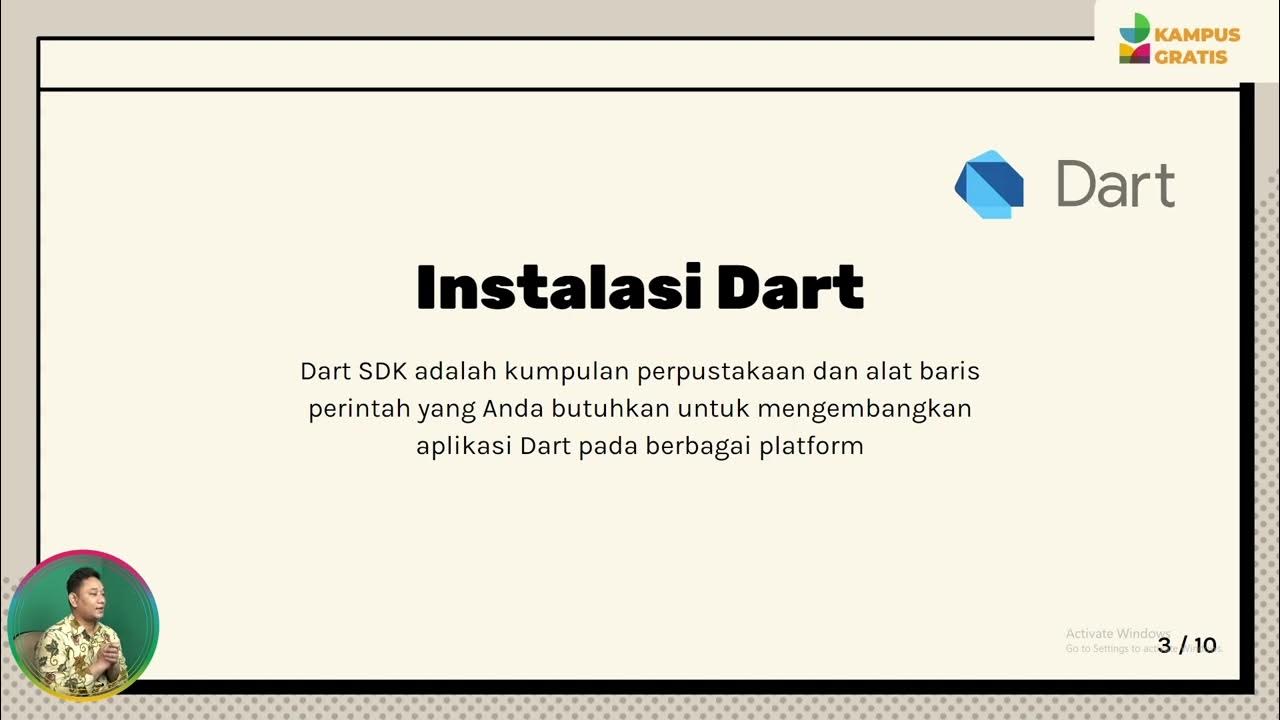Mateusz Wojtczak: What's Patrol and why you should use it
Summary
TLDRIn this talk, Mattius Voak, a Google Developer Expert in Flutter and Dart, introduces Patrol, a Flutter-first UI testing framework designed to address gaps in existing testing solutions. He highlights challenges in native automation, developer experience, and CI/CD integration, which Patrol aims to solve by simplifying code, enabling native interactions, and offering smart defaults. Patrol integrates seamlessly with both Flutter and native platforms, providing an intuitive, concise syntax for end-to-end testing. The framework also supports various native features like permissions, notifications, and interactions with third-party apps, ensuring smoother testing workflows for developers.
Takeaways
- 😀 Victor, the main organizer of Fullstack PL Conference, introduces the conference and invites viewers to subscribe for weekly talks.
- 😀 The speaker, Mattius Voak, a Google Developer Expert in Flutter and Dart, discusses the need for a better Flutter UI testing framework.
- 😀 A major issue with current Flutter UI testing frameworks is their inability to interact with native elements like permissions, third-party SDKs, or authentication flows.
- 😀 Traditional Flutter tests require extensive boilerplate code, making them difficult to read and work with, leading to poor developer experience.
- 😀 In CI/CD pipelines, integration tests have issues like slow builds, lack of isolation, and no proper test durations.
- 😀 A workaround like test bundling can improve execution, but it doesn't solve all issues, especially with crashes or errors.
- 😀 Patrol is introduced as a Flutter-first UI testing framework that solves many of these problems by allowing interaction with both Flutter and native views.
- 😀 Patrol is designed to be intuitive, written in Dart, and provides high-level finders for more efficient and readable code.
- 😀 The Patrol framework supports native features like system permissions, notifications, and device interactions, enabling complete end-to-end testing without needing separate test code.
- 😀 Patrol is compatible with device farms and native tooling, ensuring it works across various environments and platforms, making it an accessible and efficient tool for developers.
- 😀 The framework also offers a variety of utilities, such as easy permission granting and tapping notifications, along with support for testing third-party apps in native environments.
Q & A
What problem does Patrol aim to solve in Flutter app testing?
-Patrol addresses the lack of a comprehensive testing framework for Flutter apps that can interact with both Flutter widgets and native components, such as third-party SDKs, native views, and system permissions.
How does Patrol improve the developer experience compared to existing frameworks?
-Patrol offers a more intuitive and higher-level API, reducing boilerplate code and simplifying the process of writing tests. It also provides smart defaults for common actions, such as tapping and entering text, making it easier to use.
What are the main issues with the official Flutter integration tests?
-The official Flutter integration tests have limitations in interacting with native views, such as third-party SDKs, system permissions, and native UI elements. They also suffer from long, complex, and hard-to-read code for even simple actions.
What is the issue with using device farms for end-to-end testing in Flutter?
-Device farms often face issues like slow and redundant builds, no isolation between tests, and the lack of accurate test durations. These problems make the testing process slower, costlier, and more prone to errors.
How does Patrol address the issue of interacting with native elements in Flutter tests?
-Patrol extends Flutter's testing capabilities by integrating with native testing frameworks like XUI Test and UI Automator, allowing it to interact with native views such as permission dialogs, third-party SDKs, and system notifications.
What are Patrol Finders, and how do they simplify testing?
-Patrol Finders are an extension of Flutter's existing finders, offering a simpler and more concise syntax. They help developers easily locate UI elements by type, text, key, or icon, and they support smarter actions like waiting for visibility before interacting.
How does Patrol handle complex view interactions, such as finding ancestor or descendant elements?
-Patrol simplifies complex interactions by providing easy-to-understand methods for finding ancestor or descendant elements. For example, using `dollar sign` syntax helps locate an element within a parent widget, and `containing` can find a parent of a child widget.
Can Patrol be used for both Flutter and native app testing?
-Yes, Patrol supports both Flutter and native testing. It uses Flutter-specific finders for Flutter widgets and integrates with native tools for automating interactions with native elements like system notifications, permissions, and external apps.
What are some of the native interactions that Patrol supports out of the box?
-Patrol supports a wide range of native interactions, including handling permissions, tapping on notifications, interacting with system apps, enabling/disabling Wi-Fi, and handling cellular settings, among others.
How can developers install and use Patrol in their projects?
-Developers can install Patrol via Dart's package manager by adding the Patrol and Patrol Finders packages to their `pubspec.yaml` file. They can then use Patrol's CLI for running tests, building APKs, and using tools for interacting with native views.
Outlines

This section is available to paid users only. Please upgrade to access this part.
Upgrade NowMindmap

This section is available to paid users only. Please upgrade to access this part.
Upgrade NowKeywords

This section is available to paid users only. Please upgrade to access this part.
Upgrade NowHighlights

This section is available to paid users only. Please upgrade to access this part.
Upgrade NowTranscripts

This section is available to paid users only. Please upgrade to access this part.
Upgrade NowBrowse More Related Video

Mobile Programming Sesi 1

Build generative AI agents with Vertex AI Agent Builder and Flutter

FLUTTER PERTEMUAN 2 PART 1

Gemini API and Flutter: Practical, AI-driven apps with Google AI tools

Flutter Basic Training - 12 Minute Bootcamp

Flock & Nest : New Flutter Community Projects by Matt Carroll, @SuperDeclarative
5.0 / 5 (0 votes)